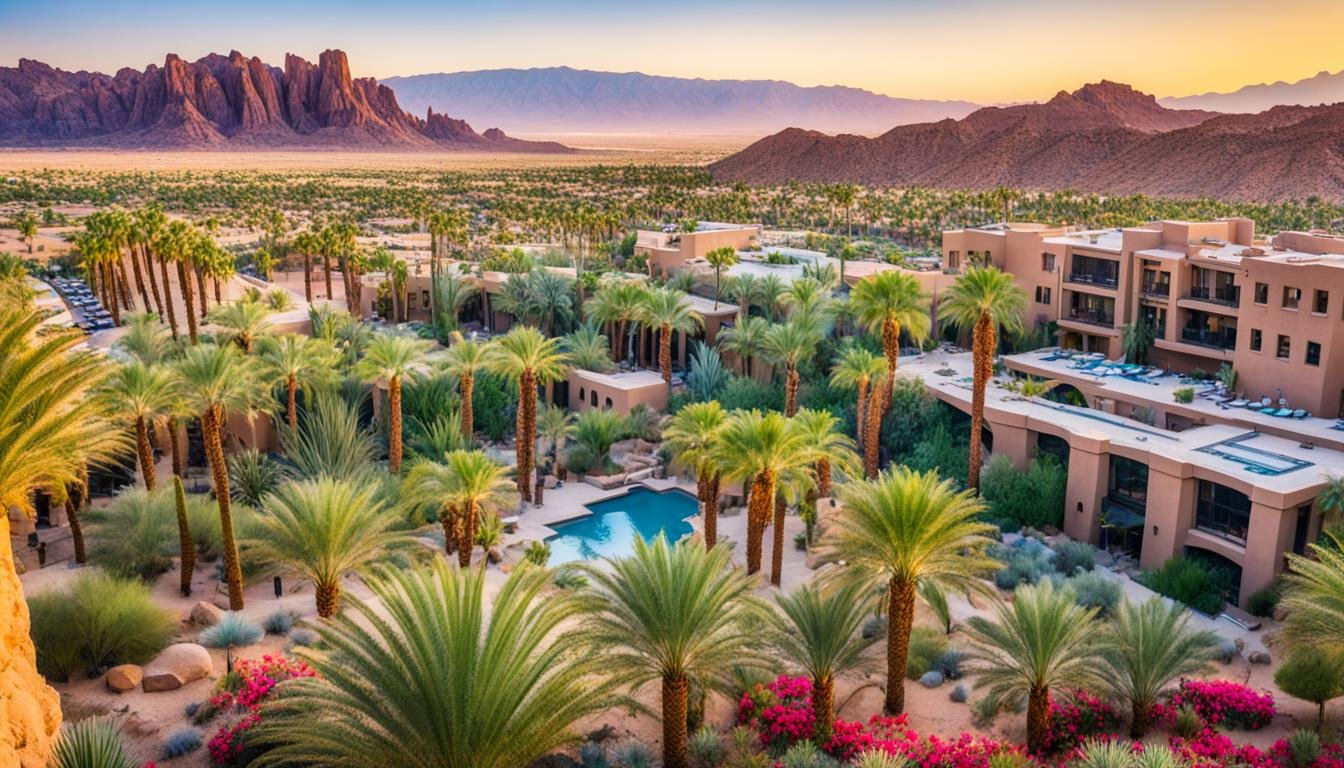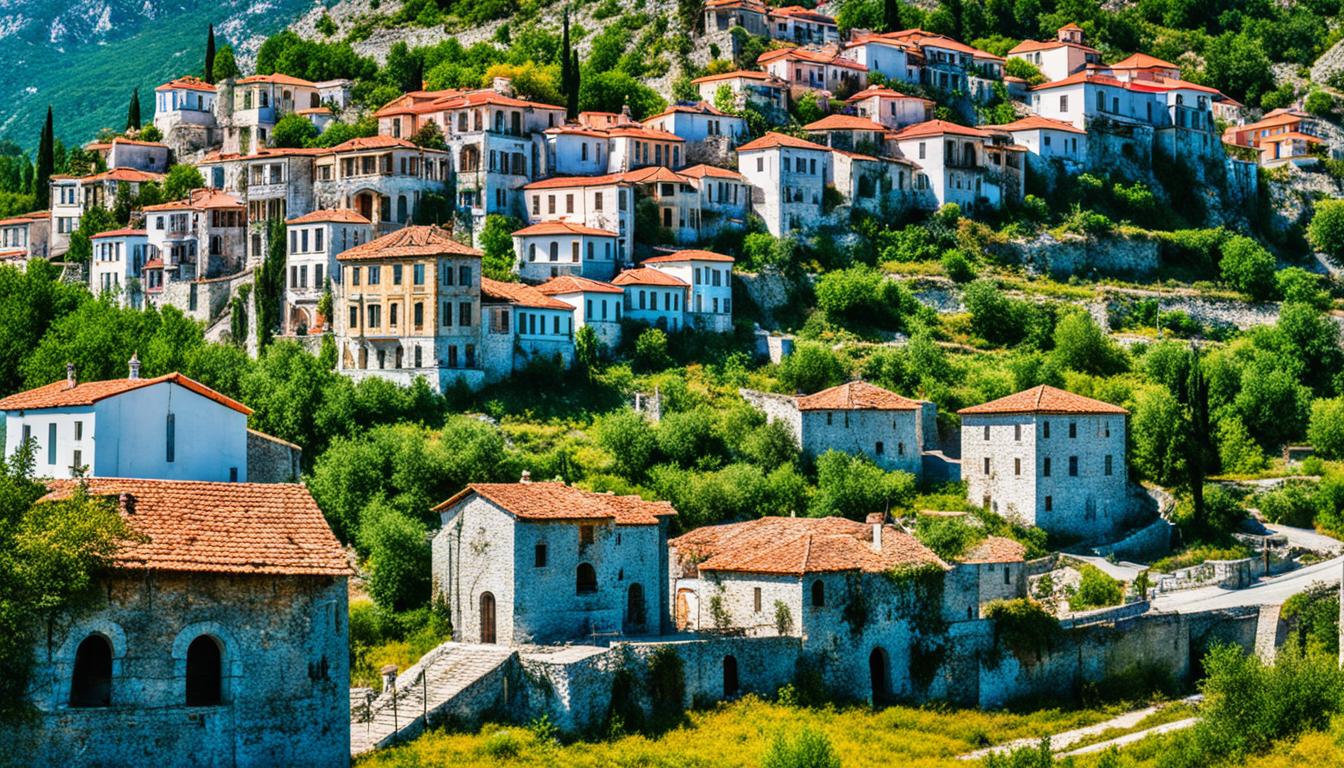Angola Biodiversity and the Built Environment
Angola is blessed with a rich and diverse biodiversity, encompassing a wide array of animal and plant species that are found nowhere else in the world. Preserving this precious natural heritage is not only essential for the country’s cultural and ecological landscape but also for the survival of endangered species. With the threats of habitat loss, climate change, and poaching, Angola is taking steps towards conservation, sustainable development, and urban planning to ensure the resilience of its ecosystems and the protection of its wildlife habitats.
Key Takeaways
- Angola’s biodiversity is home to unique animal and plant species that need protection.
- Conservation efforts, including the creation of national parks and protected areas, are crucial for safeguarding Angola’s flora and fauna.
- Engaging local communities in conservation initiatives can lead to better outcomes for biodiversity protection and sustainable development.
- Tourism can play a significant role in biodiversity conservation through eco-tourism and responsible tourism practices.
- Sustainable urban planning and green infrastructure are essential for the long-term preservation of Angola’s biodiversity in the face of climate change and urbanization.
The Rich Flora and Fauna of Angola
Angola is blessed with an abundance of biodiversity, boasting a diverse range of animal and plant species. With over 300 mammal species and more than 900 bird species, the country is a haven for wildlife enthusiasts and nature lovers alike. Angola’s unique geography has fostered the evolution of numerous endemic species, found nowhere else in the world. Among these remarkable creatures are the majestic giant sable antelope and the charismatic Angolan cave chat.
But it’s not just the animal kingdom that thrives in Angola; the country’s flora is equally captivating. Angola is home to a variety of unique plant species, with its most renowned botanical treasure being the Welwitschia mirabilis. This remarkable plant, endemic to the Namib Desert, is a living fossil that can live for over 1,000 years, defying the harsh desert conditions.
To truly appreciate the wonders of Angola’s biodiversity, let’s take a closer look at some of its most remarkable animal and plant species:
Giant Sable Antelope
The giant sable antelope, native to Angola, is a symbol of the country’s wildlife conservation efforts. With its striking black coat and impressive curved horns, this critically endangered species represents the importance of protecting Angola’s natural heritage. Once on the brink of extinction, the giant sable antelope has made a remarkable recovery thanks to conservation initiatives.
Birdlife
Angola’s avian diversity is a birdwatcher’s paradise, with a rich tapestry of species that delight ornithologists and casual observers alike. The country’s varied landscapes, ranging from coastal wetlands to dense rainforests, provide a habitat for a multitude of bird species. From the vibrant Angolan cave chat to the majestic wattled crane, Angola’s birdlife reflects the country’s incredible biodiversity.
Unique Plant Species
Angola’s flora is a treasure trove of unique plant species, each with its own story to tell. From the towering baobabs that dot the landscape to the delicate orchid species found in lush forests, the plant life in Angola offers a glimpse into the country’s natural beauty. One standout example is the Welwitschia mirabilis, a living testament to resilience and adaptation in the face of challenging desert conditions.
Exploring Angola’s flora and fauna is an awe-inspiring journey that showcases the country’s commitment to conservation and preservation. By safeguarding these natural wonders, Angola ensures the longevity of its remarkable biodiversity and creates a legacy for future generations to cherish.
Conservation Efforts in Angola
Angola has taken significant steps to protect its diverse wildlife and ecosystems through various conservation initiatives. These efforts aim to safeguard the country’s unique biodiversity and preserve endangered species for future generations.
National Parks and Protected Areas
One of the key conservation strategies in Angola is the establishment of national parks and protected areas. Covering approximately 15% of the country’s landmass, these designated zones provide safe habitats for endangered species to thrive. Two notable examples include:
- Kissama National Park: Located on the Atlantic coast, Kissama National Park is renowned for its diverse wildlife, including the iconic giant sable antelope and black rhinoceros. This protected area offers a refuge for these endangered species and plays a vital role in their conservation.
- Other National Parks and Protected Areas: Angola’s commitment to conservation extends beyond Kissama National Park. The country has established several other national parks and protected areas, creating a network of safe havens for endangered species. These areas include Quiçama National Park, Bicuar National Park, and Iona National Park.
Promoting Ecotourism
In addition to protecting wildlife and habitats, Angola’s conservation initiatives also contribute to the development of sustainable tourism through ecotourism. By promoting responsible tourism practices, Angola aims to generate economic benefits while preserving the environment and supporting local communities.
“Ecotourism is not only an opportunity to showcase Angola’s rich biodiversity but also a means to raise awareness about the importance of conservation,” says Ana Silva, a wildlife biologist and ecotourism advocate.
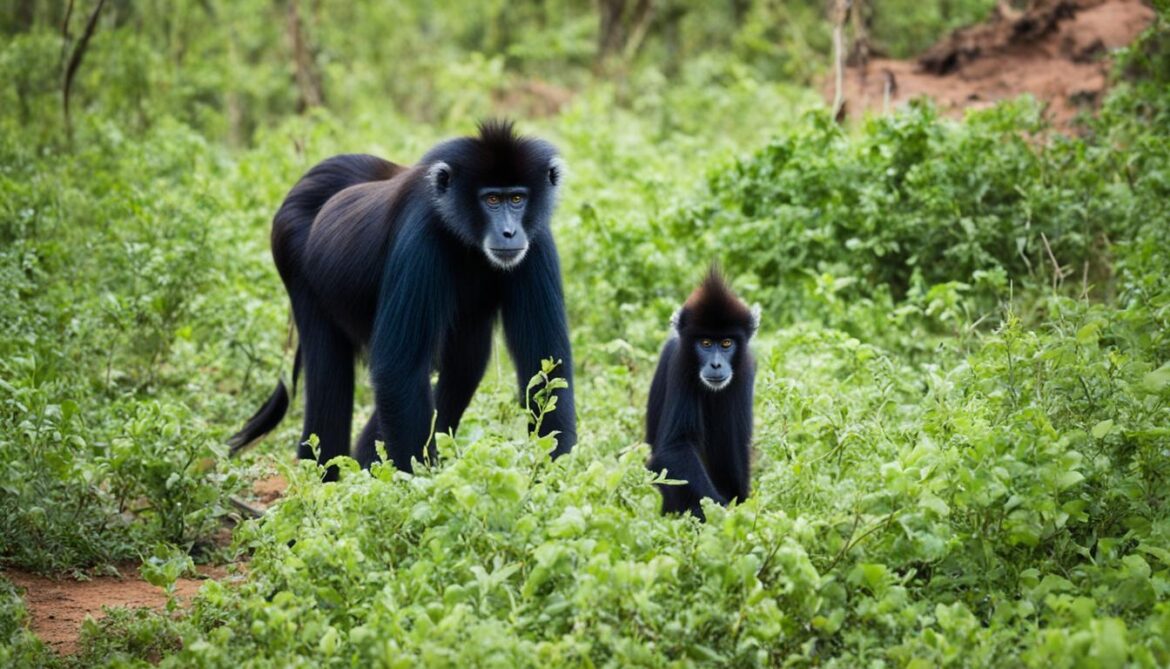
Community Involvement
An essential aspect of Angola’s conservation efforts is the active involvement of local communities in conservation initiatives. Recognizing the importance of community-driven conservation, Angola has engaged communities in decision-making processes and provided them with opportunities for education and employment in sustainable resource management.
“By involving local communities in conservation efforts, we can create a sense of ownership and empower them to become custodians of their natural heritage,” emphasizes Dr. Maria Santos, a leading conservationist in Angola.
Community-based initiatives have been successful in addressing wildlife poaching, habitat destruction, and other threats to Angola’s biodiversity. Through these collaborations, communities play a crucial role in protecting their surrounding ecosystems and preserving the country’s natural treasures.
| Conservation Initiatives in Angola | Key Features |
|---|---|
| National Parks and Protected Areas | – 15% of Angola’s landmass dedicated to national parks and protected areas – Provides safe habitats for endangered species |
| Ecotourism | – Promotes sustainable tourism practices – Raises awareness about conservation |
| Community Involvement | – Engages local communities in decision-making processes – Empowers communities to protect their natural heritage |
Threats to Angola’s Biodiversity
Angola’s biodiversity is under significant threat from various factors, including habitat loss, climate change, and poaching. These threats pose a grave danger to the unique and diverse flora and fauna that call Angola home. Let’s explore these threats in more detail:
Habitat Loss
Habitat loss is one of the major threats to Angola’s biodiversity. The conversion of forests into agricultural land, unsustainable logging practices, and mining activities contribute to the destruction of natural habitats. These habitats are crucial for supporting the survival of many unique and endangered species, such as the giant sable antelope and the Angolan cave chat.
Climate Change
Climate change exacerbates the challenges faced by Angola’s ecosystems. The effects of climate change, such as frequent droughts and floods, disrupt the delicate balance of ecosystems and disturb the habitats of various species. This further endangers vulnerable wildlife and plant species, putting their survival at risk.
Poaching
Poaching is another significant threat to Angola’s biodiversity. The illegal hunting of wildlife, driven by the high demand for products like ivory and pangolin scales, takes a severe toll on endangered species. This illegal trade not only diminishes the populations of these species but also disrupts the delicate ecological balance.
“The illegal hunting of wildlife for trade is a direct assault on Angola’s biodiversity and must be addressed urgently.” – Dr. Maria Silva, Conservation Expert
Efforts to combat these threats are crucial to the long-term survival of Angola’s unique and valuable biodiversity. It requires a collective commitment from the government, local communities, and international partners to implement effective conservation strategies and protect endangered species.

| Threats | Impact |
|---|---|
| Habitat Loss | Destroys natural habitats, displaces species, and reduces biodiversity |
| Climate Change | Alters ecosystems, disrupts species’ natural patterns, and leads to habitat degradation |
| Poaching | Reduces species populations, disrupts ecological balance, and threatens endangered species |
Angola’s Policy and Legal Framework for Conservation
Angola has implemented a comprehensive policy and legal framework to guide and support community-based approaches to conservation and natural resource management. This framework is essential for facilitating the sustainable preservation of Angola’s rich biodiversity and ecosystems.
An integral part of Angola’s policy and legal framework is the establishment of national parks and protected areas. These designated areas serve as vital sanctuaries for endangered species and unique habitats, safeguarding them from threats such as habitat loss and poaching.
Furthermore, Angola’s policy encourages the active involvement of local communities in conservation efforts. By engaging communities in decision-making and promoting their participation, the framework recognizes the important role that communities play in safeguarding natural resources. This community-based conservation approach ensures that conservation initiatives are sustainable and aligned with the needs and interests of the people who live in and around protected areas.
However, it is crucial to address the existing gaps and constraints within the policy and legal framework to enhance its effectiveness. By strengthening collaboration between government agencies, civil society organizations, and community representatives, Angola can improve the coordination of conservation efforts and enhance the implementation of community-based conservation initiatives.
“Angola’s policy and legal framework paves the way for community-based conservation and sustainable natural resource management. By involving local communities, we can create long-lasting solutions for protecting Angola’s unique biodiversity and preserving the country’s natural heritage.”
Efforts to strengthen the policy and legal framework must prioritize the development of supportive regulations, increased funding for conservation initiatives, and capacity building programs. By creating an enabling environment for community-based conservation, Angola can unlock the full potential of the local communities in safeguarding its natural resources and ensuring a sustainable future.
| Key Features of Angola’s Policy and Legal Framework for Conservation | Benefits |
|---|---|
| Creation of national parks and protected areas | – Preservation of endangered species and unique habitats – Promotion of ecotourism – Enhances Angola’s reputation in biodiversity conservation |
| Community engagement and participation | – Local communities become stakeholders in conservation efforts – Better alignment with community needs and interests – Increased sense of ownership and responsibility |
| Collaboration and coordination | – Enhanced synergies among stakeholders – Effective implementation of conservation initiatives – Improved resource allocation and utilization |
| Regulatory and funding support | – Clear guidelines for conservation activities – Increased financial resources for conservation efforts – Facilitates the enforcement of conservation laws |
Angola’s policy and legal framework provide a strong foundation for community-based conservation and natural resource management. By addressing the existing challenges and building upon the strengths of this framework, Angola can further strengthen its efforts in preserving its unique biodiversity for the benefit of current and future generations.
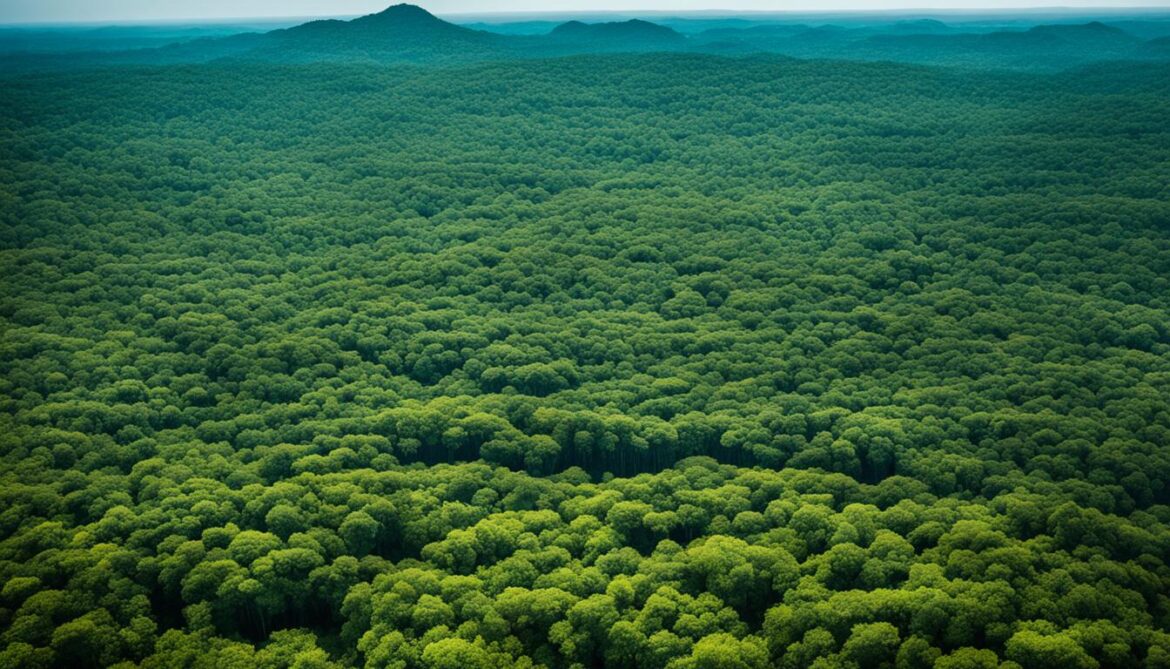
Institutional Framework for Conservation in Angola
Angola has established an institutional framework to support community-based conservation efforts. This framework brings together various organizations and institutions dedicated to the protection and preservation of Angola’s diverse ecosystems. Two notable organizations involved in conservation activities are the Associação de Conservação do Ambiente e Desenvolvimento Integrado Rural (ACADIR) and the Kissama Foundation.
ACADIR is actively engaged in community-based conservation initiatives, working closely with local communities to promote sustainable practices and protect wildlife habitats. Through partnerships and collaborations, ACADIR strives to involve communities in decision-making processes and empower them to take ownership of conservation efforts.
The Kissama Foundation, on the other hand, focuses on conservation within Angola’s built environment. They work towards integrating green infrastructure and sustainable urban planning strategies to ensure the coexistence of development and biodiversity protection. By advocating for the incorporation of nature-friendly designs and practices, the foundation aims to create harmonious urban settings that prioritize environmental sustainability.
The Role of ACADIR
“We believe that community-based conservation is essential for long-term ecological sustainability. By actively involving local communities in our conservation initiatives, we empower them as guardians of their own natural resources. Together, we can ensure a brighter future for Angola’s rich biodiversity.”
– ACADIR spokesperson
Green Infrastructure and Sustainable Urban Planning
With the support of the Kissama Foundation, Angola is exploring innovative approaches to incorporate green infrastructure into urban planning. By integrating parks, green spaces, and wildlife corridors into the built environment, Angola aims to create a balance between urban development and biodiversity conservation. This approach not only enhances the quality of life for residents but also provides opportunities for nature-based recreation and ecological education.

Addressing Gaps and Constraints
While Angola’s institutional framework for conservation shows promise, there are still gaps and constraints that need attention. Improved coordination and collaboration among different organizations and institutions can enhance the effectiveness of conservation efforts and streamline resource allocation. Additionally, capacity building and training programs for local communities and conservation practitioners can strengthen the implementation of community-based initiatives.
| Institution/Organization | Mission |
|---|---|
| Associação de Conservação do Ambiente e Desenvolvimento Integrado Rural (ACADIR) | To promote community-based conservation and sustainable natural resource management practices in Angola. |
| Kissama Foundation | To integrate green infrastructure and sustainable urban planning strategies for the coexistence of development and biodiversity protection. |
Community-Based Conservation in Angola
Community-based conservation plays a crucial role in Angola’s efforts to protect its biodiversity and promote sustainable development. By involving local communities in conservation initiatives, it is possible to achieve better outcomes in terms of biodiversity protection and sustainable land use practices.
Local communities have a deep understanding of their natural surroundings and can provide valuable insights into the conservation challenges and solutions specific to their area. Through collaboration and shared responsibility, community members become active participants in preserving Angola’s unique flora and fauna for future generations.
Promoting Biodiversity Protection
Engaging local communities in biodiversity protection activities facilitates a sense of ownership and stewardship over their natural resources. These communities play a crucial role in monitoring wildlife populations, preserving habitats, and combating threats such as poaching and habitat degradation.
“By empowering local communities to take an active role in biodiversity protection, we can tap into their knowledge and passion for the environment, creating a more sustainable future for Angola’s unique wildlife,” says Dr. Maria Silva, a leading conservationist in Angola.
Moreover, community involvement in conservation efforts fosters a deeper connection between people and nature. This connection not only benefits the environment but also contributes to the overall well-being and quality of life for local residents.
Community Education and Awareness
Community education and awareness programs are essential components of community-based conservation in Angola. These programs aim to increase environmental literacy, promote sustainable practices, and instil a sense of pride and responsibility towards the natural heritage of Angola.
Through interactive workshops, training sessions, and outreach activities, communities gain knowledge about the importance of biodiversity protection, sustainable agriculture, and responsible land use. By fostering a culture of environmental stewardship, these programs help create a lasting impact on community behaviour and practices.
Inspiring Sustainable Livelihoods
Community-based conservation initiatives in Angola also have the potential to create sustainable livelihood opportunities for local residents. By investing in eco-tourism, sustainable agriculture, and nature-based enterprises, communities can generate income while protecting their natural resources.
Eco-tourism, in particular, can showcase Angola’s unique biodiversity to visitors from around the world, providing direct economic benefits to local communities. This form of tourism encourages responsible travel practices while supporting initiatives that preserve Angola’s natural treasures.
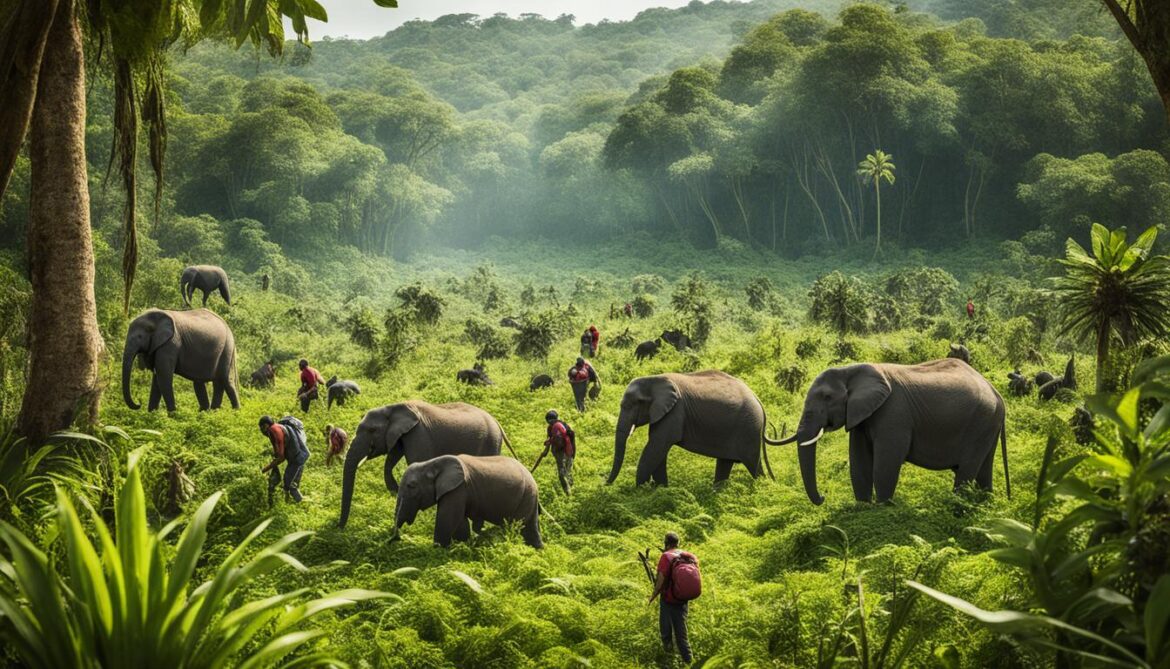
| Benefits of Community-Based Conservation in Angola | Examples |
|---|---|
| Enhanced biodiversity protection | Local communities actively engage in wildlife monitoring and habitat preservation efforts. |
| Sustainable land use practices | Communities adopt sustainable agriculture methods, promoting long-term environmental sustainability. |
| Increased environmental awareness | Education programs inspire a sense of responsibility and pride in protecting Angola’s natural heritage. |
| Economic opportunities | Eco-tourism and nature-based enterprises provide sustainable livelihoods for local residents. |
Community-based conservation in Angola not only contributes to the preservation of the country’s rich biodiversity but also promotes sustainable development and community well-being. By empowering local communities as active stewards of their natural resources, Angola can create a brighter and more environmentally resilient future for all.
Opportunities for Community Engagement in Conservation
Community engagement plays a crucial role in conservation efforts in Angola. By involving local communities in biodiversity monitoring, habitat restoration, and sustainable natural resource management, we can work together to protect Angola’s rich biodiversity and contribute to the country’s sustainable development.
One of the key opportunities for community engagement is through training and capacity building. By providing skills and knowledge to local communities, they can actively participate in conservation activities and become empowered stewards of their natural environment.
“Community engagement is essential in maintaining the delicate balance between conservation and sustainable development in Angola.”
1. Biodiversity monitoring
Engaging local communities in biodiversity monitoring programs allows for the collection of valuable data on species distribution and population dynamics. This information helps scientists and conservationists make informed decisions about habitat protection and management strategies.
Through citizen science initiatives, such as birdwatching clubs and wildlife tracking programs, individuals can contribute to valuable scientific research while developing an appreciation for their local environment.
2. Habitat restoration and reforestation
Community-led habitat restoration projects are instrumental in restoring degraded ecosystems and enhancing wildlife habitats. By involving local communities in tree planting initiatives and land rehabilitation programs, we can improve forest cover, protect watersheds, and create wildlife corridors.
“Harnessing the power of community engagement in habitat restoration can have a lasting impact on the conservation of Angola’s unique ecosystems.”
3. Sustainable natural resource management
Engaging local communities in sustainable natural resource management practices promotes the responsible use of resources while safeguarding biodiversity. This can include initiatives such as sustainable fishing practices, community-based forest management, and sustainable agriculture techniques.
Through partnerships with local communities, we can develop resource management plans that ensure the long-term viability of ecosystems, promote economic stability, and preserve cultural traditions.
“It is only through the active involvement of local communities that we can achieve lasting conservation outcomes and create a future where both people and nature thrive.”
4. Community-based ecotourism
Community-based ecotourism initiatives provide opportunities for local communities to benefit from conservation efforts while preserving their cultural heritage. By promoting sustainable tourism practices and establishing community-owned and managed tourism enterprises, we can create direct economic incentives for communities to conserve their natural resources.
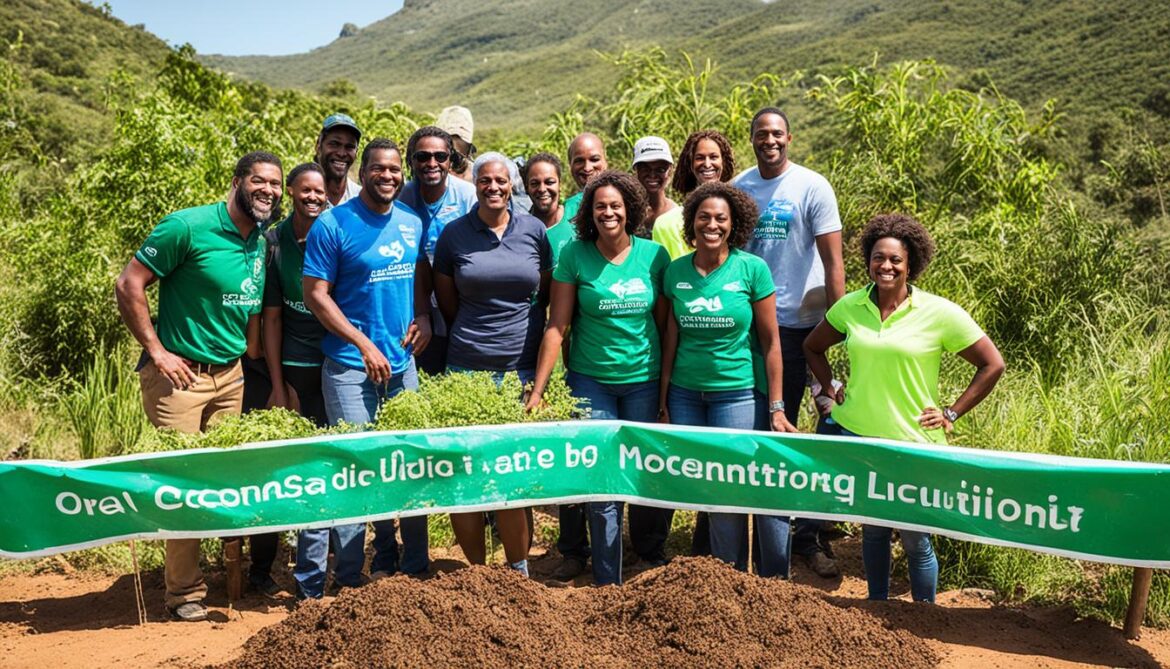
| Benefits of Community Engagement in Conservation | Examples |
|---|---|
| Enhanced biodiversity monitoring | Birdwatching clubs recording bird species sightings |
| Improved habitat restoration | Community-led reforestation projects |
| Sustainable natural resource management | Community-based fishing cooperatives |
| Economic empowerment through ecotourism | Community-owned lodges and guided nature tours |
By harnessing the knowledge, skills, and passion of local communities, we can create a future where conservation and sustainable development go hand in hand. Through community engagement, Angola has the opportunity to protect its unique biodiversity while improving the well-being and livelihoods of its people.
The Role of Tourism in Biodiversity Conservation
Tourism plays a significant role in the conservation of Angola’s rich biodiversity. By promoting eco-tourism and sustainable tourism practices, the country can generate revenue while preserving its natural heritage. Responsible tourism practices are essential in minimizing negative impacts on the environment and wildlife, ensuring the long-term sustainability of Angola’s diverse ecosystems.
One of the key benefits of eco-tourism is its potential to support biodiversity conservation efforts. Eco-tourism focuses on providing visitors with unique and immersive experiences in natural environments while minimizing the ecological footprint. By promoting responsible tourism practices, Angola can protect critical habitats and sensitive species.
“Eco-tourism allows tourists to explore Angola’s incredible biodiversity while simultaneously contributing to its preservation,” says Dr. Maria Santos, a renowned conservationist. “By creating awareness among visitors about the importance of protecting wildlife and natural landscapes, we can foster a sense of stewardship and promote environmental sustainability.”
Through eco-tourism, local communities can also benefit economically and socially. Tourism-related activities, such as guided nature tours and community-based accommodations, can provide income-generating opportunities for communities living in and around protected areas. This not only helps alleviate poverty but also emphasizes the value of preserving Angola’s natural resources for future generations.
Furthermore, sustainable tourism practices prioritize the conservation of biodiversity while meeting the needs of tourists and host communities. This includes initiatives such as waste management, energy conservation, and supporting local businesses that promote sustainable products and services. By integrating sustainability into tourism practices, Angola can ensure the long-term viability of its tourism industry while safeguarding its precious natural assets.
The Benefits of Tourism in Biodiversity Conservation:
- Financial resources for conservation initiatives
- Improved awareness and appreciation of biodiversity
- Support for local community development
- Encouragement of responsible travel behaviors
- Promotion of sustainable land use practices
Overall, tourism can be a powerful tool in biodiversity conservation in Angola. By embracing eco-tourism and sustainable tourism practices, the country can balance its economic development aspirations with the need to protect its natural heritage. Through collaborative efforts between tourists, local communities, and conservation organizations, Angola can ensure a sustainable future for its invaluable biodiversity.
Sustainable Development and the Built Environment in Angola
Sustainable development and the built environment in Angola play a critical role in safeguarding the country’s biodiversity. By prioritizing environmental protection and integrating green infrastructure into urban planning, Angola can ensure the long-term resilience of its ecosystems in the face of climate change and urbanization.
Green infrastructure, such as parks and urban green spaces, serves as vital wildlife habitats and contributes to the conservation of Angola’s biodiversity. These green areas provide refuge for diverse plant and animal species, promote ecological balance, and enhance the overall well-being of urban residents.
Urban planning in Angola should incorporate measures to protect and restore biodiversity. By embracing sustainable practices, such as the preservation of natural areas, restoration of degraded ecosystems, and promotion of sustainable land use, Angola can create a harmonious balance between human development and environmental conservation.
“Angola’s commitment to sustainable development and environmental protection is essential for the preservation of its rich biodiversity and the well-being of its citizens.”
Effective urban planning should aim to mitigate the negative ecological impacts of urbanization, such as habitat fragmentation and loss. By implementing biodiversity-friendly designs, such as green corridors and wildlife-friendly infrastructure, Angola can foster connectivity between fragmented habitats and support the movement of species.
Promoting Green Infrastructure and Sustainable Landscapes
Green infrastructure in Angola’s urban areas not only enhances biodiversity conservation but also provides multiple benefits to society. Well-designed green spaces offer recreational opportunities, improve air quality, reduce urban heat island effects, and contribute to the overall liveability of cities.
The integration of sustainable urban drainage systems, renewable energy technologies, and efficient waste management practices further reinforces Angola’s commitment to environmentally sustainable development.
The Role of Technology in Sustainable Development
Advancements in technology can be harnessed to support sustainable development in Angola. Digital solutions, such as Geographic Information Systems (GIS), can help in mapping and monitoring biodiversity hotspots, identifying priority areas for conservation, and facilitating informed decision-making in urban planning.
The use of smart city technologies, such as energy-efficient infrastructure, intelligent transportation systems, and smart grids, can contribute to resource efficiency and reduce the ecological footprint of urban areas.
The Importance of Community Participation
Engaging local communities in sustainable development and environmental protection initiatives is vital for long-term success. By involving residents in decision-making processes, raising awareness, and providing education on sustainable practices, Angola can foster a sense of ownership and responsibility among its citizens.
Community-based conservation efforts can empower local communities to take an active role in biodiversity conservation, sustainable land management, and the preservation of natural resources. Furthermore, promoting sustainable livelihoods, such as eco-tourism and nature-based enterprises, can create economic opportunities while simultaneously safeguarding Angola’s unique biodiversity.
Benefits of Sustainable Urban Planning and Green Infrastructure
| Benefits | Explanation |
|---|---|
| Conservation of Biodiversity | Green infrastructure serves as wildlife habitats and promotes ecological balance. |
| Improved Quality of Life | Accessible green spaces enhance the well-being and overall livability of urban areas. |
| Climate Change Mitigation | Green infrastructure helps reduce urban heat island effects and sequesters carbon dioxide. |
| Sustainable Resource Use | Efficient energy, water, and waste management practices support resource conservation. |
| Resilient Urban Ecosystems | Biodiversity-friendly urban planning enhances ecological resilience in the face of climate change. |
By adopting a holistic approach to sustainable development and incorporating green infrastructure into urban planning, Angola can create cities that are environmentally resilient, socially inclusive, and economically vibrant. The integration of biodiversity protection measures and community participation in decision-making processes are crucial steps towards building a sustainable future for Angola’s built environment.
Conclusion
In conclusion, Angola’s biodiversity is a remarkable asset that significantly contributes to the country’s cultural and ecological landscape. As such, it is crucial to prioritize conservation efforts to safeguard and protect Angola’s diverse flora and fauna. The establishment of protected areas and the implementation of community-based approaches are pivotal in achieving this objective.
By promoting sustainable development practices, Angola can ensure a harmonious coexistence between its economic growth and the preservation of its rich biodiversity. Engaging local communities in conservation initiatives is a key element in achieving this balance, as it allows for the active participation of those who have a vested interest in protecting their natural surroundings.
With concerted conservation efforts and the active involvement of communities, Angola can forge a sustainable future for its biodiversity and built environment. By valuing its unique natural heritage and fostering a sense of stewardship among its citizens, Angola paves the way towards a resilient future in which both its biodiversity and human societies can thrive.
FAQ
What is Angola’s biodiversity like?
Angola’s biodiversity is rich and diverse, comprising a wide range of animal and plant species, many of which are unique to the country.
What are some notable animal species in Angola?
Angola is home to over 300 mammal species, including the giant sable antelope and black rhinoceros. The country also boasts more than 900 bird species.
Are there any unique plant species in Angola?
Yes, Angola has unique plant species such as the Welwitschia mirabilis, which is endemic to the Namib Desert.
What conservation efforts are being made in Angola?
Angola has implemented various conservation initiatives, including the creation of national parks and protected areas. These efforts aim to safeguard endangered species and promote ecotourism.
What are the threats to Angola’s biodiversity?
Angola’s biodiversity faces threats from habitat loss, climate change, and poaching. Factors such as deforestation, unsustainable logging, and illegal wildlife trade contribute to these threats.
What is Angola’s policy and legal framework for conservation?
Angola has established a policy and legal framework that supports community-based approaches to conservation and natural resource management. This framework includes the creation of protected areas and the involvement of local communities in conservation efforts.
What institutions are involved in conservation in Angola?
Angola has an institutional framework that includes organizations such as the Associação de Conservação do Ambiente e Desenvolvimento Integrado Rural (ACADIR) and the Kissama Foundation. These institutions are involved in various conservation activities.
How does community-based conservation contribute to Angola’s biodiversity?
Community-based conservation plays a crucial role in protecting Angola’s biodiversity. By involving local communities in conservation initiatives, better outcomes can be achieved in terms of biodiversity protection and sustainable land use practices.
Are there opportunities for community engagement in conservation in Angola?
Yes, there are numerous opportunities for community engagement in conservation in Angola. By providing training and support to local communities, they can actively participate in biodiversity monitoring, habitat restoration, and sustainable natural resource management.
How can tourism contribute to biodiversity conservation in Angola?
Tourism can play a significant role in biodiversity conservation in Angola. By promoting eco-tourism and sustainable tourism practices, the country can generate revenue while protecting its natural heritage.
What is the role of sustainable development in protecting Angola’s biodiversity?
Sustainable development and the built environment are crucial for protecting Angola’s biodiversity. Green infrastructure and urban planning that integrates biodiversity protection measures can contribute to the conservation of wildlife habitats and promote environmental sustainability.
What is the significance of Angola’s biodiversity and conservation efforts?
Angola’s biodiversity is unique and plays a vital role in the country’s cultural and ecological landscape. Conservation efforts, including the establishment of protected areas and community-based approaches, are crucial for preserving Angola’s diverse flora and fauna.



